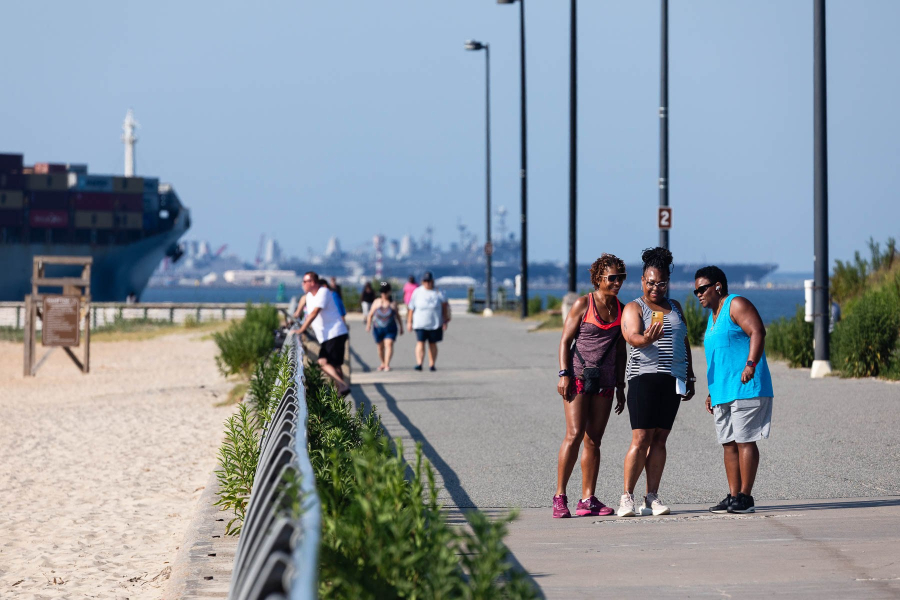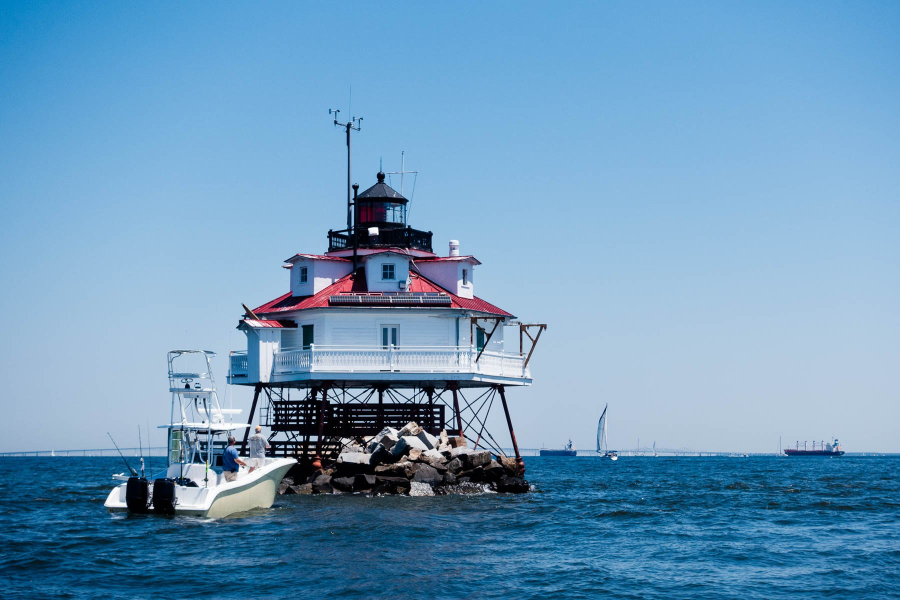Building a 21st-century National Recreational Area
Taking action to provide public access to a "major part of the nation's heritage"

Did you know that the United States may soon add its 41st national recreation area to its already impressive list of over 400 national parks across the country? In July 2023, U.S. Senator Chris Van Hollen and U.S. Representative John Sarbanes, both from Maryland, introduced a bill in Congress to create the Chesapeake Bay National Recreation Area. While this bill has been introduced, it has yet to be taken up for a vote by Congress.
What is a National Recreation Area?
The National Park Service conserves and protects areas of land or water in the United States that are of great scientific, historical and/or scenic importance. These regions usually contain at least one distinctive feature, such as a desert, forest or mountain range, or are sites that are important to our country’s heritage.
National recreation areas are lands with valuable scenic and/or natural resources that also
provide ample recreational opportunities. These areas tend to be some of the most popular National Park Service units as they offer an abundance of activities for people to enjoy, like hiking, biking, swimming, kayaking and a multitude of others.
It takes an act of Congress to create a national recreation area. There are currently 40 national recreation areas throughout the country, managed not only by the National Park Service, but also by the Bureau of Land Management and the U.S. Forest Service. While there are a few national recreation areas that abut the Chesapeake Bay watershed–Allegheny National Forest in Pennsylvania, Mount Rogers in Virginia, and Gauley River and Spruce Knob-Seneca Rocks in West Virginia–the Chesapeake Bay National Recreation Area would be the first to fully lie in the watershed.
In 2004, the National Park Service conducted a Congressionally-authorized special resource study and found the Chesapeake Bay is “unquestionably nationally significant and a major part of the nation’s heritage.”
How would a national recreation designation benefit the Chesapeake Bay?
The recreation area would be a partnership between Maryland, Virginia, localities and private entities, focusing on recreational access to the Bay and telling the stories of Chesapeake, from its unique landscapes to the people that depend on the Bay for their livelihoods. A particular emphasis will be telling the history and stories of watermen, free and enslaved Blacks and Indigenous peoples.
“Right now, there’s no entity whose mission is to help tell the stories of the Chesapeake Bay,” notes Senator Van Hollen. “If you look at the Chesapeake Bay, in many ways, its history is a microcosm of our American history.”
The bill would open up more funding opportunities for the Bay, increase public access, strengthen stewardship across the region and benefit local economies. In 2022, the Outdoor Industry Association found that in Maryland alone consumers spent $3.9 billion on outdoor recreation activities, creating 80,391 jobs across the state. In Virginia, that figure rose to $5.6 billion spent, and 124,908 jobs created.

What will be part of the Chesapeake National Recreation Area?
Visitors to the Chesapeake National Recreation Area will be able to access the area from just north of Annapolis, Maryland down to Hampton Roads, Virginia, through portions of Maryland and Virginia’s eastern shores, and west almost to Richmond, Virginia. This national recreation area is unique as it won’t focus on just one landmark, but rather showcase several different sites along the Bay.
The bill is proposing four initial sites to be included within the recreation area. The National Park Service is then charged with acquiring new sites for further public access–but only by purchasing or through donations. Currently, only about 7-8% of the 11,684 miles of Chesapeake Bay shoreline is accessible to the public.
Existing parks or other publicly accessible areas along the Chesapeake will have the option to voluntarily join the national recreation area. By joining, they will benefit from National Park Service branding and resources. This system is similar to the existing Chesapeake Gateways program, which consists of approximately 150 wildlife refuges, museums, historic sites and other resources, and is also managed by the National Park Service.
“The formal connection of these hub sites and partner parks, the expertise of the National Park Service, the additional federal resources for conservation and public access, and the influence of the National Park Service designation and branding will put the Chesapeake Bay on par with other nationally significant landscapes,” said Senator Van Hollen.
The four initial sites of the Chesapeake National Recreation Area include:
Burtis House: Located in downtown Annapolis, Maryland, this former waterman’s house was once occupied by Captain William Henry Burtis. Captain Burtis was not only a waterman but also a member of the State Oyster Navy, which preceded the Maryland Natural Resources Police. His home is expected to become the headquarters and the visitors center for the Chesapeake National Recreation Area.
North Beach of Fort Monroe: Fort Monroe has been at the forefront of American history for several milestones, including the Civil War, but most soberly, it is where the first enslaved Africans arrived in the United States. This designation will expand the preservation of the Fort, of which part is already a National Monument.
Thomas Point Shoal Lighthouse: Built in 1825 out of stone, eventually the Thomas Point Shoal Lighthouse became the only screw-pile lighthouse in the Chesapeake Bay. The lighthouse became a National Historic Landmark in 1999 and is still used as a navigational aid by the U.S. Coast Guard to this day.
Whitehall Manor: Originally built by Horatio Sharpe, the last British colonial governor of Maryland, Whitehall Manor was the first National Historical Landmark to be designated in the state of Maryland.
As part of the process of drafting the Chesapeake Bay National Recreation Area legislation, Senator Van Hollen, Representative Sarbanes and the working group of over 30 Bay-related organizations put together a list of 10 guiding principles in which to lead this work. While all significant, the one that resonates across them all is “Alignment with Goals of the Chesapeake Bay Watershed Agreement.”
“The Chesapeake Bay is the focus of one of the largest environmental restoration efforts in the world. The legislation for the Chesapeake Bay National Recreation Area will also align with the goals of the 2014 Chesapeake Bay Watershed Agreement, including promoting a healthy ecosystem and habitat, conserving and protecting lands, bolstering environmental stewardship and literacy, and incorporating climate resiliency.”

Comments
There are no comments.
Thank you!
Your comment has been received. Before it can be published, the comment will be reviewed by our team to ensure it adheres with our rules of engagement.
Back to recent stories